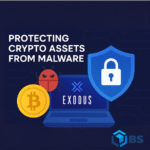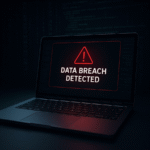Now Reading: 💸 How to Get Your Money Back from a Scammer in Crypto: 7 Proven Steps
-
01
💸 How to Get Your Money Back from a Scammer in Crypto: 7 Proven Steps
💸 How to Get Your Money Back from a Scammer in Crypto: 7 Proven Steps

How to get money back from a scammer is the urgent question on every crypto investor’s mind after they lose funds. Unfortunately, cryptocurrency scams are particularly devastating because blockchain transactions are irreversible – there’s no “undo” button. Unlike credit card fraud where banks can often reverse a charge, decentralized crypto networks offer no chargebacks bitdegree.org. However, that doesn’t mean all hope is lost. By acting fast and following best practices for crypto scam recovery, you can sometimes recoup part – or even all – of your stolen funds. This guide explains each step, from contacting banks and law enforcement to avoiding fake recovery schemes, so you know how to get your money back from a scammer and protect yourself in future.
Why Crypto Scam Recovery Is Difficult and How to Respond
One primary reason victims struggle to recover money in a crypto currency fraud is the decentralized nature of cryptocurrency bitdegree.org. In traditional finance, if someone steals from your credit card or bank, the issuer can often reverse the charge or compensate you bitdegree.org. Cryptocurrency networks don’t work that way. Once a transaction is recorded on the blockchain, it can’t be undone by any single authority. Many experts liken the crypto space to the “Wild West” because of these fewer safety nets bitdegree.org.

However, this doesn’t mean there are zero options. In some scenarios – especially if payments went through banks, credit cards, or exchanges – you can take steps to fight back. For example, banks often do have to refund unauthorized transferslifelock.norton.com. In fact, LifeLock’s fraud guide notes that “legally speaking, banks are generally required to refund scammed money if you didn’t authorize the transaction”lifelock.norton.com. Likewise, the FTC advises that victims should immediately contact their bank or card issuer to report the fraud and reverse the chargesconsumer.ftc.govlifelock.norton.com. So can banks recover scammed money? In many cases where you didn’t give permission, yes – but timing and method matter.
Step 1: How to Get Money Back from a Scammer – Stop the Fraud & Gather Proof
The first rule after spotting a crypto scam is to stop all payments and communication immediately. Even if you think you can convince the scammer to “give it back,” that almost never workslifelock.norton.com. Scammers are highly skilled at disappearing once they have funds, and continuing to engage only risks more loss. Instead, focus on gathering evidence.
- Record all details. Take screenshots and notes of every interaction: names, emails, phone numbers, website URLs, wallet addresses, transaction IDs, dates and amounts. This information is critical if law enforcement or your bank investigates.
- Preserve chat logs and emails. Many scams happen over messaging apps or email. Do not delete anything – these can be shown to authorities.
- Check official lists. Look up any platform or coin name on authoritative sources. For instance, our List of Fake Crypto Exchanges 2025 identifies known fraudulent trading sites. If you sent funds to a platform on that list, mention this when reporting the scam.
- Secure your accounts. If the scam involved login credentials, immediately change passwords, enable two-factor authentication (2FA), and scan your device for malware. You want to prevent any further theft of your funds.

Documenting the scam thoroughly not only helps in getting refunds, but also assists in preventing similar scams against others.
Step 2: Can Banks Recover Scammed Money in Crypto Cases?
Once you’ve stopped the fraud, immediately contact any financial institution or payment service involved. The sooner you act, the better the chance of reversing unauthorized transactions.

- Bank or Credit Card: If you paid the scammer with a credit/debit card or had funds pulled from your bank account, call your bank and explain the situation. The FTC recommends: “If you paid with a credit or debit card, contact the issuer, tell them it was a fraudulent charge, and ask to reverse the transaction”consumer.ftc.gov. Likewise, if funds were wire-transferred or debited, notify the bank that it was an unauthorized transactionconsumer.ftc.govlifelock.norton.com. Under U.S. and many international consumer-protection laws, banks must refund scams if reported quicklylifelock.norton.comconsumer.ftc.gov. At minimum, they can shut down your current account or card and freeze pending transfers to prevent further losslifelock.norton.com.
- Cryptocurrency Exchange: If you sent crypto to a fraudulent exchange or trading platform, contact that exchange’s support team immediately. Provide the transaction details and the scammer’s wallet address. Reputable exchanges can often trace withdrawals and may freeze the scammer’s account if flagged in time. For example, if you deposited funds on an exchange that turned out to be a scam, a legitimate exchange might help reverse withdrawals before they leave its system. Even if the exchange seems shady, it’s worth trying – point out if it matches any known scam list (see our List of Fake Crypto Exchanges 2025).
- Payment Apps and Wallets: If you used an app like PayPal, Venmo, or a custodial wallet, report the scam to their support. Some services offer “chargeback” or refund for scams. At the very least, alert them to prevent further account misuse.
- Notify the Platform’s Security Team: If the scam happened on social media, a forum, or messaging app (for instance, a Telegram channel selling “investment plans”), report the scammer to the platform moderators. This may not directly recover your funds, but it can help shut down the scammer’s account and warn other users.
Remember: time is critical. The faster you report and freeze accounts, the better the chance of stopping transfers. While cryptocurrencies themselves can’t be reversed, funds often transit through banks, exchanges or payment networks where intervention is possiblelifelock.norton.com.
Step 3: Report Crypto Scams to Law Enforcement and Regulators
Getting your money back may require law enforcement. Report the fraud immediately to the relevant authorities. Authorities won’t always guarantee recovery, but they collect data and sometimes coordinate with other agencies to trace criminals and freeze assets.

- Local Police: File a report with your local or national police. Even if they seem skeptical, having an official report can be crucial later. The FTC notes that a police report “may help you get refunded later”lifelock.norton.com. Provide all the documentation you collected (transaction IDs, chat logs, screenshots).
- Federal Agencies (U.S. and International): In the U.S., report crypto scams to the FBI’s Internet Crime Complaint Center (IC3) at ic3.gov. The FBI’s public service announcements stress: “Immediately submit a report to the FBI IC3… and be wary of anyone claiming they can recover your funds as this may be another scam.”ic3.gov. So, do not pay anyone promising to “get your money back for a fee” – the FBI explicitly warns that such recovery services are usually fraudulentfbi.govic3.gov. Similarly, if you’re outside the U.S., check if your country has an equivalent cybercrime unit or report to Europol/Interpol. Some countries have financial ombudsmen or regulators (like the UK’s FCA or India’s Cyber Crime Cells) who handle scam reports.
- Interpol/Europol: While individuals usually start with local police, international coordination can help bust large networks. For example, INTERPOL coordinated Operation HAECHI V in 2024 which led to 5,500 arrests and the seizure of $400M in assets from cyber-enabled fraud worldwideinterpol.int. These operations even targeted crypto scams – INTERPOL issued a “Purple Notice” to warn about a Tether (USDT) phishing scam that gave fraudsters full access to victims’ walletsinterpol.int. Mention the scam to local police so they can liaise with INTERPOL if needed.
- Regulators and Watchdogs: Report the incident to consumer protection agencies and regulators. In the U.S., you can file a complaint with the FTC (reportfraud.ftc.gov) and the SEC if it involves an investment scheme. The UK’s Action Fraud or the EU’s Europol can also collect scam info. While regulators rarely “recover” funds, they can issue alerts.
When you report, include all relevant transaction information. The FBI’s guidance stresses providing crypto addresses, transaction hashes, dates, and amountsic3.gov. Even if you are unsure which details matter, include everything. Law enforcement can run blockchain analytics on addresses to trace movements.
Step 4: Use Blockchain Tracking and Exchanges
While law enforcement works behind the scenes, there are other routes to try:
- Blockchain Forensics Firms: Companies like Chainalysis, CipherTrace or Crystal specialize in tracing stolen coins on the blockchain. If the scam involved a large sum, hiring such a firm (often via a lawyer) may reveal where the funds went. Sometimes stolen crypto is swapped into a coin on an exchange; if the firm spots this, you could notify that exchange to freeze the funds. (Be aware these services are expensive and not guaranteed.)
- Crypto Exchanges: If any of the stolen crypto has been moved to major exchanges, alert those exchanges. Many have compliance teams and will freeze accounts flagged for illicit funds. You can provide the hackers’ wallet addresses and any identity clues. For example, if the fraudster tried to cash out to USD, exchanges in your country might block those transactions once alerted.
- Virtual Asset Service Providers (VASPs): Countries are increasingly requiring crypto services to follow anti-money laundering (AML) rules. Reporting the theft to them may trigger an AML review.
- Victim Support and Alert Networks: Some non-profits and communities track crypto scams. Reporting to groups like Chainabuse (chainabuse.com) or sharing details on scam forums may warn others or connect you with investigators.
Note: Success varies widely. The FBI has observed that often “the scammers will never unlock the funds and it’s likely they have already withdrawn those funds into criminally controlled cryptocurrency wallets”fbi.gov. That’s why it’s crucial to report quickly. Still, every piece of information helps, and there are documented cases where courts seized and forfeited stolen crypto. For instance, U.S. prosecutors recently obtained a court order to forfeit $2.5 million in cryptocurrency stolen in a confidence scamjustice.gov. In that case, authorities plan to use those funds to compensate victimsjustice.gov. This shows that with high-profile seizures, victims may get some justice.
Step 5: Beware of “Recovery” Scams
After a victim has been scammed, unscrupulous actors often surface claiming they can get your money back – for a fee. This is usually a second scam. The FBI and IC3 both caution that “anyone claiming they can recover your funds” is likely a fraudsterfbi.govic3.gov. You should never pay an upfront fee to recover stolen crypto.
Instead, stick to official channels (bank, police, legitimate lawyers, forensic firms). The FBI warns: “Do not pay for services that claim to be able to recover lost funds.”fbi.gov. If someone pressures you to invest more or pay money to unlock your account, remember the FTC’s advice: paying further taxes or fees to the scammer will not get your money backfbi.gov. In summary, the only “service” you should trust is an accredited legal or law enforcement one; any “crypto recovery” agency on Facebook or Telegram is almost certainly a scam.
Step 6: Identifying Fake Cryptocurrencies and Preventing Future Fraud
Once you’ve dealt with the immediate crisis, it’s wise to learn how to spot future scams. Preventing further losses is key. Here are some red flags and tips:

- Suspicious Coin or ICO Promises: Be very wary of any crypto investment promising guaranteed high returns or giving out free tokens. If it sounds too good to be true, it usually is. Real projects are typically listed on CoinMarketCap or CoinGecko – check if the token exists on reputable sites. Our guide on how to identify fake cryptocurrency scam coins covers common signs (lack of whitepaper, anonymous team, plagiarized website, etc.).
- Unsolicited Offers and Phishing: Legitimate companies will not cold-call or email you investment deals. If someone contacts you out of the blue on social media with a crypto “opportunity,” do thorough research. Verify URLs carefully: scammers often create look-alike websites or apps. The U.S. CFTC advises that fake trading sites often have no real address or use offshore domainscftc.gov.
- Unregulated Exchanges: Only use well-known, regulated exchanges. Check our List of Fake Crypto Exchanges 2025 – if an exchange isn’t on mainstream listings and has negative reviews, treat it as high risk.
- Community and News Checks: Look for official announcements and community discussions. If a coin or exchange is new, search online for any warnings. Brainstak’s Market Update May 2025 and industry news can help you stay informed. For example, unrealistic price predictions (like “XRP to $10 by 2025”【?】) often circulate to hype coins. Always check multiple reputable sources.
- Cold Storage vs. Custodial Wallets: Keep large sums in personal wallets (like hardware wallets) where you control the private keys. If you must use an online wallet or custodial service, use ones with strong security track records. Brainstak’s article on Exodus Desktop Wallet Hacked shows even well-known wallets can have vulnerabilities – always keep backups.
By integrating these practices, you reduce the chance of falling prey to a crypto fraud again. Trust your instincts: if something feels off, double-check or ask for advice from trusted crypto communities before you send any money.
Conclusion and Next Steps
Recovering money from a crypto scammer is challenging, but not always impossible. The key is speed and persistence: stop further payments, contact your bank/exchange, and report the crime to authorities immediatelylifelock.norton.comic3.gov. Keep detailed records of all evidence – this can significantly aid any investigation or refund requestic3.govlifelock.norton.com. Be realistic: many cases sadly result in total loss, which is why prevention is so important. Learn to spot the signs of fake coins and exchanges to protect yourself.
Finally, stay engaged with the crypto community. Share your experience (anonymously if needed) to warn others, and consult resources on crypto scam recovery and secure investing practices. Remember, regulators and law enforcement are increasingly focusing on crypto crime: 2024-25 saw major international sweeps (INTERPOL’s operation seizing hundreds of millionsinterpol.int, Europol arrests in a $3M trading scamsecurityonline.info, and U.S. courts forfeiting stolen assetsjustice.gov). The more victims report scams, the more likely agencies will act.
In summary:
- Act fast. Freeze accounts, document the scam, and report it.
- Use legal channels. Work through banks and law enforcement – avoid sketchy “recovery agents.”
- Stay informed. Learn the red flags of crypto fraud and always double-check before investing.
By following these steps, you stand the best chance of recovering your money from a scammer and keeping your crypto safer in the future.




























Hughes Richard
I must express my gratitude to the recovery expert team for their efficient and competent job. My bitcoin was recovered only three days after I contacted the team. About a week ago, I unexpectedly lost about $50,000 in bitcoins. I awoke to an empty bitcoin wallet and no idea where the money had gone. I was on the verge of losing it when I attempted calling many agencies to assist me in resolving these vital difficulties, but to no effect. I did some research and got a lot of positive feedback about (QUALIFIEDEXPERTIES@ gmailcom). I trusted my instincts and kept in touch even though I was skeptical; they had it rectified in less than three days.